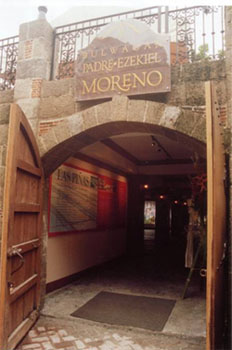The future of any country lies on its young generation, whose visions and dreams have always served as rays of hope for a better, brighter and more promising tomorrow.
The Villar Foundation Youth Poverty Reduction Challenge, which was launched in 2017, is a friendly competition among Filipino youth through social enterprises designed to help alleviate the poverty situation in the country.
We believe that the Filipino youth can make a difference in bringing solution to the nation’s most pressing problem, which is poverty. In the competition, ten (10) Most Outstanding Social Enterprises with existing poverty alleviation programs will be named as winners. Each winner will be awarded with P150, 000 plus a trophy.
The Youth Poverty Reduction challenge is open to at group of at least 5 young people, 16 to 29 year old college students, out-of-school youth, young professionals, social enterprise groups, group of young entrepreneurs, youth organizations and other community associations.
The entries must be having been in operation for a minimum of one year and have a bank account in its name.
Each entry shall go through rigid evaluation, comprehensive screenings and rational project defense. Entries will be judged and selected by a panel of social entrepreneurs and socio-civic specialists.
Social enterprises should focus on, among others, food or agricultural products, recycling waste materials or agricultural waste products, green inventions/environment saving inventions/green technology, water/waste/energy solutions, rural and urban innovations, information technology and livelihood development.
All entries must conform to environment-protection standards and should also address waste management measures in any give social enterprise set-up.
Criteria:
- Originality and uniqueness, 25 percent. The social enterprises must be able to creatively demonstrate how they solve the poverty problem in their communities.
- Adaptability or the ability of the enterprise to respond with flexibly in any given community situation, where others in the same situation can emulate/replicate, 25%.
- Sustainability or how social enterprises address a need and eradicate/solve such need, 25%.
- Community upliftment or how the social enterprise will help in making better the conditions of the poor and disadvantaged communities, 25 percent.
Judges will review all submitted entries and will select at least 20 entries in the Initial Screening Process. The semi-finalists will then undergo site evaluation and social enterprise model analysis and defense.
The 10 Most Outstanding entries will be picked from the list of semi-finalists. The winners will be selected based on the ratings by the Judges. All decisions of the Judges are final and non-appealable.
The Villar Foundation office will start accepting entries starting April 15, 2024 until June 15, 2025.
Awarding Ceremony shall be in July 2025.
Application forms for the competition can be downloaded from the Villar Foundation website (www.villarfoundation.com.ph). Accomplished forms should be sent to [email protected].
 Use of Vermiculture
Use of Vermiculture









